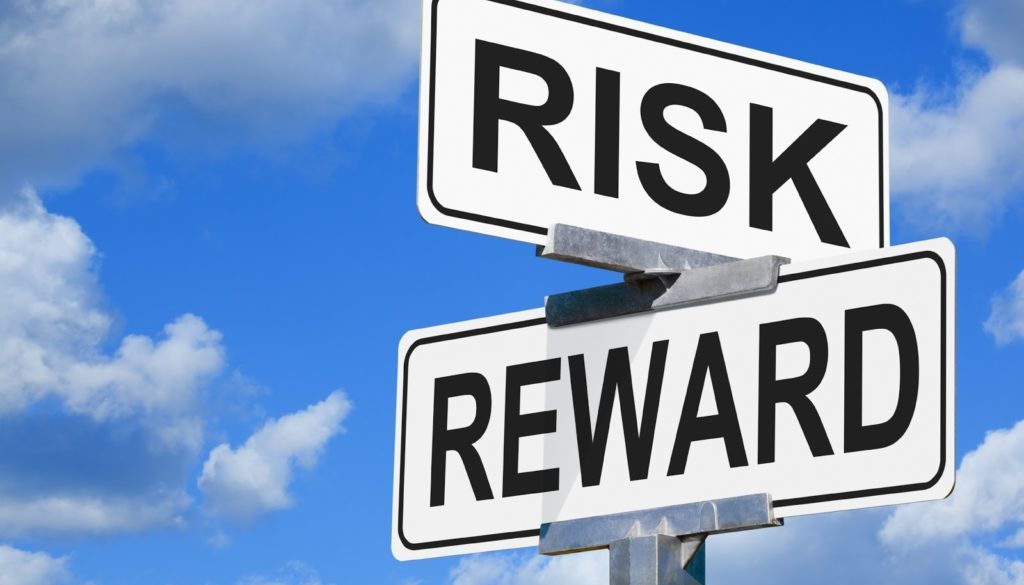Taking Risks in Business
So, you want to become an entrepreneur. Your grades are phenomenal, your work ethic is stellar, you’re the first one to take initiative among your peers, your goals are clear, you don’t make excuses, and your attitude is positive. But there’s one thing missing from your equation and you can’t quite figure out what it is.
Growing up, we’re taught to be wary of taking unnecessary risks, and that makes sense because it’s only human nature to avoid potential danger and failure. But what if I told you that the one thing you had to do in order to become more professionally and financially successful than you could even imagine was take risks? They may be terrifying, monstrous risks, but the success you will gain will augment into a future from your wildest dreams. Would you take the chance? If so, keep reading.
Confidence in Yourself and Your Decisions
![]() When you look at affluent entrepreneurs and businessmen, do any of them appear to lack confidence? Of course not, because with business comes risks, and with risk-taking comes greater self-confidence. According to one economic psychologist of Kozminski University, “One could argue it [self-confidence] distinguishes entrepreneurs from other people.” Before you can consider taking risks, which is essentially investing in yourself, and in many cases expecting others to do the same, you have to be the biggest believer in yourself. If you aren’t confident in your ability to conquer your endeavors, perhaps that’s something you should work on before putting yourself in high-risk scenarios.
When you look at affluent entrepreneurs and businessmen, do any of them appear to lack confidence? Of course not, because with business comes risks, and with risk-taking comes greater self-confidence. According to one economic psychologist of Kozminski University, “One could argue it [self-confidence] distinguishes entrepreneurs from other people.” Before you can consider taking risks, which is essentially investing in yourself, and in many cases expecting others to do the same, you have to be the biggest believer in yourself. If you aren’t confident in your ability to conquer your endeavors, perhaps that’s something you should work on before putting yourself in high-risk scenarios.
Types of Risks (and Reactions to Risks)
In entrepreneurship, there are different kinds of risks that you will encounter during the varying phases of your business ventures. One article published by Western Governors University says, “There are five kinds of risks that entrepreneurs take as they begin starting their business. Those risks are: founder risk, product risk, market risk, competition risk, and sales execution risk:
- Founder risk considers who the founders of the company are, if they get along, and how they will work for the company.
- Product risk takes into account the engineers creating new product for the business and how they will recruit other product engineers.
- Market risk looks at the problem you’re solving with your product and how consumers will react.
- Competition risk looks at how you differ from other similar organizations and companies.
- Sales execution risk helps you look at how to sell your product to consumers by presenting them a solution to their problem.”
In addition to being familiar with the types of risks you’ll no doubt be faced with, it’s equally important to have a good sense of when to lessen or altogether avoid a risk. These practices are often referred to as risk mitigation (the reduction of potential dangers) and risk avoidance (pulling out when failure is too probable to justify the risk). A paper published by the University of Pennsylvania suggests that “perhaps the ultimate risk-mitigant is the entrepreneur’s passion. After all, if they are not excited about what they are doing, why should others be excited? If they are unclear as to why they are doing things, how can they expect others to share their vision? In the end, entrepreneurs manage risk by doing it ‘for themselves’ rather than doing it ‘for money.’ While most entrepreneurs desire to make money (and lots of it), money is the derivative of their success.” It goes on to say, “Great entrepreneurs study competitive products and competitors, both to analyze what these competitors do well and to determine what opportunities they leave in their wake. They must understand the difference between fads and market realities, for while money can be made from fads, long-term success cannot be made by fads.”
Calculated Risks
![]() The most significant way you can turn high-risk investments into rewards is by making calculated risks. Smart, calculated risks are a combination of knowing your stuff and having a passion for what you do, and both are mandatory. Most people aren’t born with a proclivity for making smart, calculated risks, in fact it’s very much a learned behavior. Take it upon yourself to study successful American entrepreneurs and what kind of risks were involved in their success stories. Nathan Blecharczyk, for example, was the first engineer of the hugely successful company Airbnb, despite the massive potential for it to be a flop after years of its co founders attempting to launch it. Then there’s Elon Musk, who founded the website that eventually became PayPal, then the space exploration operation SpaceX, and finally the fantastically successful Tesla motors, the first automotive and energy company of its kind. Another one is real estate developer Donald Trump who took risks like employing some of the first women in the fields of real estate and construction when the Manhattan Grand Hyatt was being built, and building a skyscraper in another Manhattan location that people told him he’d never get zoned let alone make money on. What do these three highly successful entrepreneurs have in common? They know how to invest in smart calculated risks (and they aren’t afraid to).
The most significant way you can turn high-risk investments into rewards is by making calculated risks. Smart, calculated risks are a combination of knowing your stuff and having a passion for what you do, and both are mandatory. Most people aren’t born with a proclivity for making smart, calculated risks, in fact it’s very much a learned behavior. Take it upon yourself to study successful American entrepreneurs and what kind of risks were involved in their success stories. Nathan Blecharczyk, for example, was the first engineer of the hugely successful company Airbnb, despite the massive potential for it to be a flop after years of its co founders attempting to launch it. Then there’s Elon Musk, who founded the website that eventually became PayPal, then the space exploration operation SpaceX, and finally the fantastically successful Tesla motors, the first automotive and energy company of its kind. Another one is real estate developer Donald Trump who took risks like employing some of the first women in the fields of real estate and construction when the Manhattan Grand Hyatt was being built, and building a skyscraper in another Manhattan location that people told him he’d never get zoned let alone make money on. What do these three highly successful entrepreneurs have in common? They know how to invest in smart calculated risks (and they aren’t afraid to).
Take Risks Seriously
The higher you climb the louder the voices around you will shout, “don’t do that, it’s too risky!” But you’re a bright young lad, and you now know about the significance of risk-taking. Keep in mind that, as you grow in your education and profession, your potential for success is worth the risk. Soccer athlete Frederick Wilcox once said, “Progress always involves risks. You can’t steal second base and keep your foot on first. ” So get your confidence in check, educate yourself to make calculated risks, and then go steal second (and beyond).





